Ukrainian military engineers have retrofitted British-supplied Challenger 2 tanks with specialised anti-drone netting to counter the increased use of unmanned aerial vehicles (UAVs) in combat zones.
Source- https://t.co/crNwURNIGn
Sporting folding anti-drone netting. pic.twitter.com/oAtBMUcHD5
— OSINTtechnical (@Osinttechnical) October 5, 2024
This update enhances the tanks’ defences against the threat of surveillance and attack drones, which have become a significant factor in the conflict.
The lightweight folding netting is designed to interfere with the operational mechanisms of drones, potentially disabling them before they can deliver payloads. This is a strategic departure from the previous use of more cumbersome fixed protective cages, which although effective, added significant weight and could impact the vehicles’ agility and operational speed.
The mesh’s design not only provides a practical defence against the smaller, often commercially-sourced drones used in the conflict but also maintains the tanks’ operational efficiency without the burden of additional heavy armour.
This measure reflects a broader trend in adapting military hardware to new threats, recognising the growing role of UAVs in conflict dynamics.
Given the reported effectiveness of UAVs in recent conflicts, where drones have been responsible for significant losses of armoured units, this upgrade is yet another chapter in the ongoing adaptation of ground forces to asymmetric warfare threats.
The devastating impact of drone warfare is evident in the considerable losses sustained by Russian forces. According to recent reports, drones have accounted for a substantial portion of Russian equipment losses, with a single brigade’s worth of hardware being destroyed every two months, highlighting the urgency and relevance of integrating effective anti-drone systems.


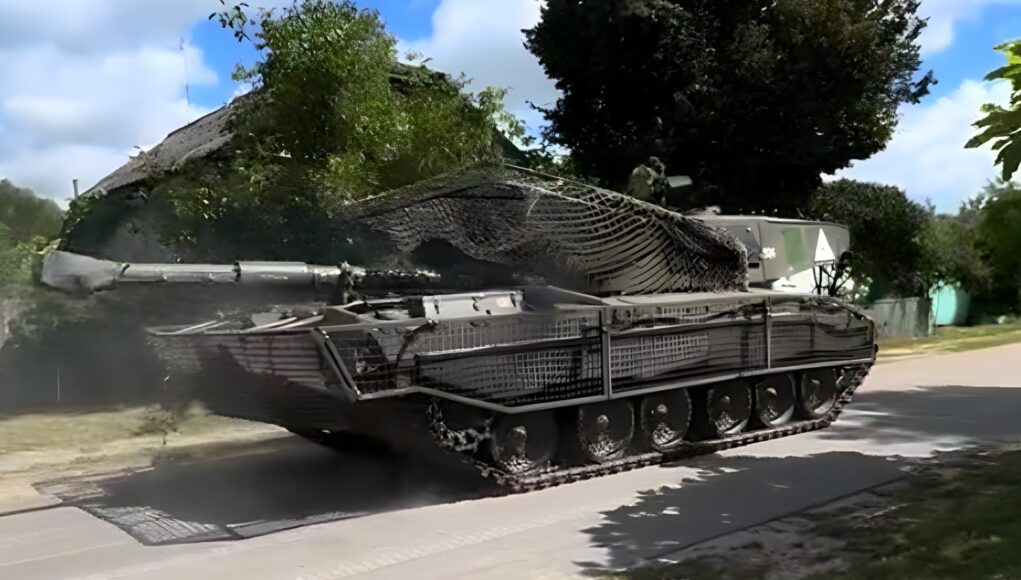
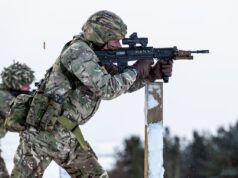
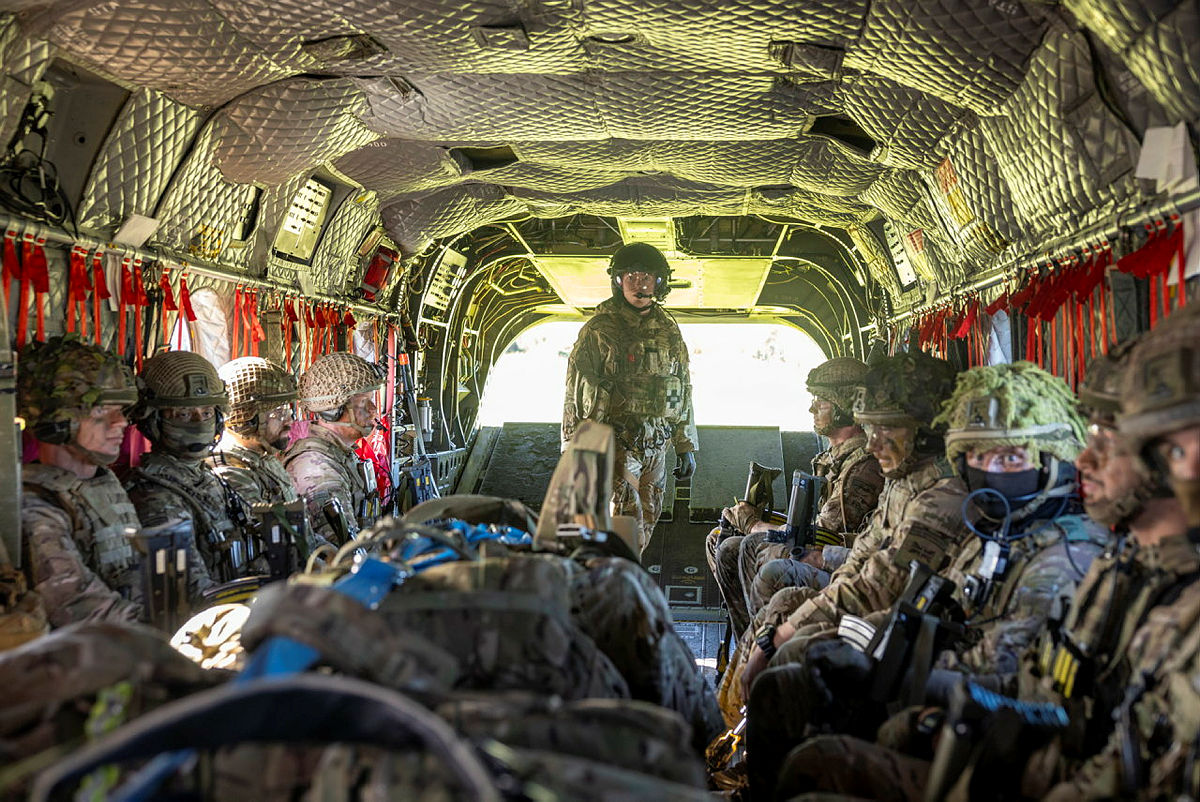
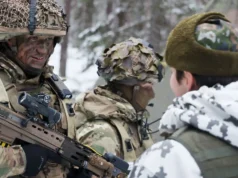


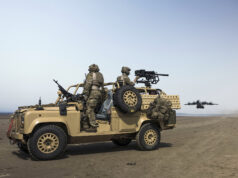

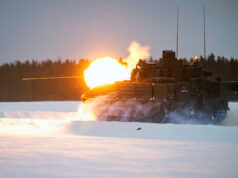



I wonder if in decades to come we will look at these pictures like we look at pictures of dazzle cam from WW1?
It is a shame man is at his most inventive in war.
Never a truer word , however the plus side is that although war is the greatest source of to innovation. Man has reaped the benefits in peace time.
Development such as the mass production of penicillin , the jet engine were down to war innovation, regrettably so was nuclear weapons .
Well that last statement just isn’t true is it?
Wi-Fi, the Internet, Space Exploration, Smart Phones, Vaccines, Radio, Light Bulbs… all invented during peace time.
I guess you have a very low bar for inventiveness.
Strictly speaking she did not say all invention, however to a certain extent, her statement is true.
The Internet was originally a military communications system.
Space exploration came about from the Cold War and the race to put someone in orbit, on the moon etc.
Smart phones came about from military research that led to the integrated circuit and communications.
Spread spectrum tech has its roots in military tech to develop unjammable Telecoms.
Radio , light bulb all peace time inventions.
Btw the flat screen LED TV a British invention we all enjoy ( mostly) came about from research towards the glass less cockpit.
The. Personnel computer by the CI A need to equip their agents in the field.
Aircraft development took huge leaps during the first and second world wars.
High speed , light weight diesel engines in our cars has its roots in German research during WW2.
+GPS was military first , space exploration off the back of ballistic missile race.
If you’re going to be pedantic make sure nobody can turn your pedantry on you:
She said “in War.”
None of the things I listed where invented IN WAR.
People are just as inventive during peace as they are in war.
A time has never existed on Earth when war or conflict hasn’t been ongoing.
I was not being pedantic, I was just pointing out that war has always been a huge catalyst for technology and many everyday objects that people take for granted have military origins.
You where.
And again, a “military origin” doesn’t mean “originated in War.”
The Tank originated in a war.
The Internet didn’t.
Oh and far FAR more things have origins in the civilian world than the military btw.
Whatever floats your boat.
Not my fault that you’re wrong.
Neither is it mine that you didn’t take my answer in the spirit of the discussion it was meant to be.
Whether an innovation occurred during war or was done in preparation for a future war makes little to no difference to me.
Innovation is always present, people do not suddenly become creative during war but war or the preparation for war ( essentially) peace has always created a favourable environment where innovation has flourished.
You can nit pick all you like but many of the innovations we take for granted in our modern world were born during war or the preparing for war. To me there is no difference.
Exactly and that was clearly what was meant by the original statement, I’m shocked it became so controversial and centered around ever decreasing circles of when we are or are not in actual conflict.
I will invoke the very sound advice my mother gave me when I was younger.
Have a nice day!!
Cool, it makes no difference to you, so you’ve decided to make a completely different standard to the one i was arguing and correct me on it.
The statement i was correcting was “in war” as opposed to “in peace.” If you don’t care about the distinction then, really, why bring it up the “correction”?
I think you are being deeply unfair, the original statement was ‘…in war…’ to any objective mind simply says war inspires it be it not war or Cold War, you raised the modification ‘during the war’ which completely changes the overall argument to your strict parameters rather than the originators and twists the very simple point she was making.
But again the very technology that enables the internet did actually come to be conceived and patented in WW2 so where does that leave us some of the tech was and some of its tech wasn’t invented during the actual war, some never used till some time afterwards though often vital. This becomes a pointless circular argument for its own sake, virtually no technology is exclusively created solely within war. Tv took 30 to 40 years to come together with a range of technologies the light bulb similarly, radar was pre war but war drove it forward, computers during the war though inspired by a long process of concepts and machines going back to Babbage and Lovelace and iBM tabulating machines it all becomes meaningless talking about 1939 to 1945.
Fact is like it or not, war has historically and still does have a massive influence on inventiveness even if it’s only down to the finance made available to it because of innovation’s military potential. So the statement stands, you can disagree if you like, no problem it’s an open discussion but to close if off with ‘you are wrong’ is patently ridiculous as well as unnecessarily patronising.
I don’t care if you think I’m being unfair, or patronizing either.
Hang on 2 points. Research started in war doesn’t necessarily create technology in that timescale but did as a result of it some time after, so surely that still qualifies. Equally while I think you are right in the post war period to say inventiveness has flourished during peace that to a degree is due to the world that the 2nd WW specifically created certainly it put progress on steroids and remember we almost instantly went into the. Old war where innovation and invention was inspired and financed because of the fear of war. So war and peace are not purely a black and white state it’s far more nuanced as to technological inspiration not just ring fenced by being in or not an actual war. I think therefore it is perfectly valid to claim we are never more inventive than when war or its threat is staining us in the face which I think is what Stephanie was implying and I think most experts would accept the lead up and the war itself pushed technology and innovation decades ahead in a very short time and created the very post war environment that inspired the peace time inventiveness thereafter.
Americas inspiration to return to the moon and eventually Mars has an awful lot to do with the fear of China reaching the polar regions first and laying claim to them. No not war but the military implications of that are very real as many an analyst are telling us.
Okay, then I’ll shift to the Industrial Revolution, or the enlightenment.
The central point is quite simple “Humans are at their most inventive during war.” is not true. We are just as inventive during times of peace. It’s really telling that both of you are desperately trying to redefine times when we are categorically not at war into the “war” category.
I’m also completely unwilling to give Stephanie the benefit of the doubt.
*Edit: Also by your logic I get to credit War time inventiveness to the “Peace” Category if it builds off of any form of research that was stated in Peace Time. Which is kind of ridiculous, and I think further goes to my point that we don’t get fundamentally more inventive during war.
Colour tv was first shown by Mullard in the post war period, don’t know whether it originated in wartime research but I wouldn’t be surprised if radar and military sensor research was the inspiration. Certainly Britain was in no position to exploit it for commercial purposes in that period.
I wasn’t specifically refering to colour tv. I was actually refering to flat screen technology which was originally developed and patented by the British Defence Research agency . But the patent was sold for a fraction of its true potential.
I think you’ll find that most of them were for military use
The internet was based on ARPANET – the need to keep nuclear forces in contact with each other during war. Space exploration came directly of the development of ballistic missles and ICBMs.
I tend to agree with you to a degree though war has certainly advanced technology on a massive scale though I agree not exclusively. But then most of the technology you mention was greatly set free or motivated by the economic momentum, wealth influence and facilities that were created in the US during and as a result of the war and exploited thereafter to create that first great American surge.
Oh and on a particular note while WiFi wasn’t inspired by wartime technology it was fundamentally only made truly possible by the patent taken out by Hedy Lamarr and George Antheil specifically to help the war effort and in particular guide torpedoes though it wasn’t taken up at that time, but shoes much innovation still had its roots in war time necessity to solve problems.
Space exploration was during high tensions in the aftermath and near war eras during an extreme arms and technology race to see who is more ready/advanced than eachother. (The cold war era)
Necessity is the mother of invention. There is no greater necessity than survival. Everything from modern computers, space exploration, internet, even radio, which Marconi had part funded by the Royal Navy.
I think man is being at his inventive best in Ai and robotics presently and that will only grow stronger up to the point Ai is doing most of the inventing in this and no doubt in other fields including military all for good or bad.
Did you notice how fast those CR2s were travelling…or, did they just speed the film up a tad ?! 😆 .
Ukrainians are resourceful people , it wouldn’t surprise me if it had been “ modified”
No, that’s pretty much 40 mph.
We’re Kmh down here in Aus so that nearly 65 Kmh. That’s a fair clip for a 70tn tank.
Yeah, this is one of the points I kind of try to make rather often, Tanks are surprisingly fast, to the point where cross country it’s actually very difficult to go faster than tanks go without damaging the crew.
Cross country the Chally 2 can easily keep up with the more powerful Leo and Abrams. The hydrogas suspension makes up for the lower power. Compared to the torsion bar suspension the other tanks use, hydrogas gives the crew a much smoother ride.
Hydrogas is great, but I think that 30mph is very much a sort of magic number when it comes to off road.
…and hydrogas units are much easier to change. In contrast, dealing with a broken torsion bar can be a nightmare, not that it happens that often, I believe.
I might have mentioned this before. But on my penultimate tour in Afghan I was embedded with the Canadians. They had brought with them some Leo 2s.
We had joined on to a resupply run heading back to Kandahar base (Going for a Timmies!) That had two Leo’s for force protection. We had our pair of Foxhounds and were if remember correctly the third or fourth vehicles in the convoy of around 50 vehicles.
Ahead of us were a Canadian Nyala MRAP, a Leo and a further Nyala some 300m in front of the tank. The Nyala is the MRAP with the green tinted 2” thick armoured glass windows all around the cab.
We were 20km west of Kandahar city on the MSR. When the Leo lept about a foot in to the air. A command wired IED was set off, which EOD reckon was 4 to 5 153 HE shells wired together. Then we got hit with HMG and small arms.
Our Foxhounds had gimpy mounted RWS with a day/night camera, sadly no thermal at that stage. One thing they don’t mention about the RWS is that some mug has to replen the gun after using up the belt. Which means getting outside the vehicle. I can testify that the Foxhound’s armour work’s well!
Not sure why but the Nyalas received more attention than us. Which I put down to you could see the guys in the vehicle. Which may have spurred on the Taliban’s efforts. The Leo’s crew were incapacitated, so were out of the fight.
Six boxes of 7.62, plus a fair chunk of chest mags later. A pair of Dutch Apaches gave close air support. The contact lasted precisely 27 minutes. As the boss was writing up a report on his tablet, which he posted by satphone just as the Leo was hit.
The after action found 32 Taliban dead or terminally wounded. But we believe from the amount of fire and brass found, that around 100 were involved.
The Leo was proper goosed. Both tracks had been blown off, along with numerous road wheels. The suspension arms were bent to buggery. Plus the side skirt plates were found around 100m away.
A low loader and wrecker shifted the Leo back to Kandahar base. Where it sat in the wrecks yard for the duration of my 6 month tour. After which it was airlifted to Germany for repairs.
Luckily for the crew, the tank was fitted with additional mine protection. So apart from concussion, bruises and a broken nose. The crew all survived!
But it puts into context how robust or battle damage resilient a Chally is compared to a Leo. According to the Canadians, the floor pan buckled along with most of the torsion bars. Which meant the tank was not reparable in the field. How would a Chally have faired? If the floor was buckled, but you replaced the hydro gas suspension and wheels, would it still be useable? I would like to think it would be.
PS After getting into Kandahar base and doing an assessment of our Foxhound. We reckon it got peppered by a PK, as there were nice stitch marks up and down one side. But surprisingly we found a number of .303 rounds embedded in the nose grill armour. Had to have a MOAC and two donuts after that one!
Hi Davey,
Great dit. Great guys, the Canucks. I did a 2-yr Exchange Posting with them in Ottawa 2004-6. I had forgotten that the Canadians had some Leo2s out there in Afghan. I was more familiar with the Dutch Leo2s in Camp Bastion.
Good to hear the Foxhounds armour worked well, and good job (in a way) the Leo took the IED blast rather than a Foxhound. I think you are right that a Chally would have fared better than the Leo2 if it also had as good mine protection. As discussed the suspension would have been field-repairable and it could probably have continued soldiering with a buckled floorplate.
Familiar with Tim Hortons but not the term MOAC? Several Timmies in the UK now – I have been to the one in Belfast and the one on the Chichester bypass (twice).
Hi Graham, the MOAC was the mother of all coffees (Quad espresso, with a bit of frothy milk).
Have quite a few dits about working with the Canuks. The lot I was with was an amalgamation of “Scottish” based regiments. But they had a thing about massive mustaches, with the tips highly waxed. We had to go native!
The food square at Kandahar was a bit bizarre, especially in regards what was happening outside the wire. But I guess they were there for the Mutleys?
I didn’t know Napoleon conquered Austrailia. How did I miss that? mph is the anglo-sphere term.
Canada, South Africa, Gibraltar, Bermuda, Ireland, Australia and New Zealand all use Km/H. Only America, the Falklands, and the UK haven’t joined civilization and the wider Angloshpere.
I stand corrected, tyanks Dern. Perish the thought we should lose milage here though.
Contrary to what mainly American critics say, CR2 is a quite fast tank.
Very fast cross country too – a lot has to do with its vastly superior suspension compared to Abrams and Leo2.
Whoa!how dare you make such a statement 😂👍
Sorry mate, but there are too many Chally critics out there!
Our equipment will be excellent.
There just isn’t enough of it.
True, except that Boxer MIV is to do the wrong job!
Indeed.
There being so few of them left, the CH2s should be declared a protected species.
Probably! Just 213 on the active list and maybe 70, probably in rag order, in storage from the inactive list.
Yes, impressive. A (one of many) standard speed limit here in Sydney is 60kmh so that’s quite fast. Need some bloody good brakes too!
And the CR3 will likely be even more agile.
Looks about right for a CR2 at full chat!
Ok for fishing 🐟 I suppose 🤗 on a serious note I wonder if this is something the British Army will adopt ?
What is it made of? Presumably, it needs some rigidity to neutralise hollow charge munitions.
It’s not to neutralise hollow charge munitions, it’s to entangle the drone before it sets it’s munitions off. Cam nets do the same thing for fixed gun positions.
So no use against a drone dropping a bomb, only against a kamikaze drone.
It did look like camouflage netting.
Depends on what’s being dropped. The traditional dropped hand-grenade style bomb is not going to phase a tank if the hatches are closed, and a net might actually catch a bomb before it impacts (remember it’s only accelerating under gravity and a net might not be substantial enough to detonate a fuse).
If it is made of the same material as “Tarian” flexible armour (essentially a kevlar net) it is designed to trap and mis-shape the warhead so that the penetrative jet doesn’t form correctly. Once there has been an “event” it’s easily repaired using spare Tarian net and zip ties.
Much yet to learn about dealing with new technology but this is one example, simple but useful……possibly? I just wonder what the boffins are up to as in WW2 the odd ones proved to be indispensable.
Are the nets been knitted by grannies in Dorset ?
This could lead to a shortage of “shreddies”. Other breakfast cereals are available 😀😀😀😀
Interesting concept akin to the old anti torpedo nets. Cheap and innovative solution. Should mean warheads are triggered away from the hull hopefully improving vehicle survival
Basically correct, it’s a flexible, lighter replacement for bar armour. Designed to trap and mal-form the HEAT warhead so that the penetrative jet doesn’t form correctly.
Looks like the Ukrainians have added extra armour to the front glacis (watch the lead tank closely in the video).
I know Dorchester armour is roughly 30yrs old now but it is still technically classified. I wonder how well it has performed in Ukraine. There are pictures circulating showing what appears to be a strike from a sabot round on the turret cheek of a C2 used in the Kursk offensive. The turret roof plate seems to have buckled from the cheek plate but it appears the turret itself wasn’t penetrated and the crew survived.
I have also read there is no Dorchester armour in the hull which relies on steel only (due to the philosophy that C2 would fight in the hull down position when the tank was developed. Does anyone know if this is true? If it is, I wonder if Farnham armour has been added to hull for C3?
I think that Dorchester armour is used on the hull and turret front. There are several levels of enhancement for operations to add composite panels to the hull and turret sides, as well as ERA blocks. I assume the engine deck remains the most vulnerable area, patricularly to top attack missiles.
I think you mean ‘cope cage’
“a single brigade’s worth of hardware being destroyed every two months”
Makes you think our tiny tank force won’t last long in a real war.
As I’ve said many times:
This is a terrible analogy.
That’s a brigades worth of hardware destroyed over a front that’s conservatively, 1,600km (sorry 1,000 miles) long.
We wouldn’t be occupying a front that long, so the total equipment loss is an irrelevant statistic.
I wonder if there will be an article here about the FV432 Bulldog about to go on exercise in Germany allegedly being called a ‘rustbucket” that always breaks down by British soldiers.
Is available on Daily Mail and several other sources.
I mean that’s not really newsworthy. 432’s are ancient and even when I was working on them nearly a decade ago they needed constant maintenance to keep running.
Tanks are the new battleships.
Drone fodder.
How many of our C2s have the Ukrainians lost ? Is it still only one confirmed ?